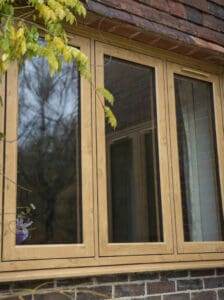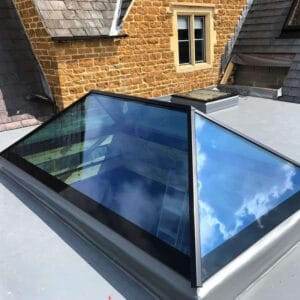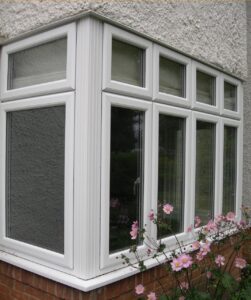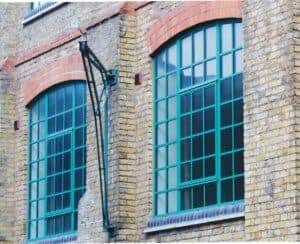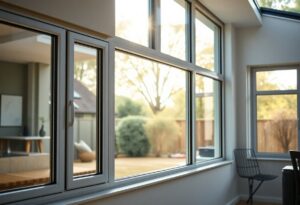It’s necessary for you to understand how gaskets and weatherstripping play a vital role in maintaining the long-term integrity of R2 products. These components act as the first line of defence against environmental factors that can cause wear and tear, ultimately prolonging the lifespan of your items. By ensuring proper sealing, they help prevent issues such as air leakage and moisture ingress, safeguarding your products from potential damage. In this post, you’ll learn about their significance and how to optimise their use for better performance.

Understanding Gaskets
While seemingly simple, gaskets play a vital role in maintaining the integrity of R2 products by preventing leaks and ensuring airtight seals. They are imperative components that contribute to the overall efficiency and performance of machinery and structures.
Types of Gaskets
- Spiral wound gaskets
- Flat gaskets
- O-ring gaskets
- PTFE gaskets
- Metallic gaskets
Assume that you select the correct type based on the specific application to achieve optimal results and longevity.
Material Selection
To ensure the effectiveness of gaskets, selecting the right material is fundamental. Different environments and applications require unique material properties to withstand varying temperatures, pressures, and chemical exposures.
Even in demanding environments, using the appropriate materials will greatly enhance the performance of your gaskets. For example, rubber is excellent for flexibility, while metal provides durability. Materials like PTFE offer outstanding resistance to chemicals, making them suitable for specific applications. The risks associated with improper material selection can lead to leaks and system failures, emphasising the importance of making informed choices that align with your needs.
The Function of Weatherstripping
Some may not realise that the primary function of weatherstripping is to create a sealed barrier around doors and windows. This not only prevents drafts and moisture from entering your space but also helps maintain a stable indoor temperature. By effectively sealing gaps, weatherstripping plays a vital role in enhancing the energy efficiency of R2 products, safeguarding your investment and ensuring long-term performance.
Benefits of Weatherstripping
Among the many advantages of weatherstripping, energy efficiency stands out. Properly installed weatherstripping reduces energy bills by minimising heat loss during winter and keeping your space cooler in summer. Furthermore, it helps reduce noise infiltration, providing a quieter environment. The protection against moisture also helps prevent mould growth, contributing to a healthier living space.
Common Weatherstripping Materials
Among the various materials used for weatherstripping, you will commonly encounter options such as foam, vinyl, and felt. These materials suit different applications, with each providing its own set of benefits. Selecting the right weatherstripping material can significantly impact your home’s insulation and durability.
And, when choosing weatherstripping materials, consider the durability and weather resistance they offer. Foam is typically inexpensive and easy to apply but may need replacing sooner than more robust materials like vinyl, which provides excellent insulation and lasts longer. Felt is an additional option, offering good sound absorption, but it can be less effective against severe weather conditions. Ultimately, selecting the appropriate material will ensure effective sealing, improve your home’s energy efficiency, and minimise maintenance efforts.
The Importance of Proper Installation
Now, understanding the significance of proper installation in gaskets and weatherstripping is vital for ensuring the longevity and effectiveness of your R2 products. An incorrectly installed gasket or weatherstripping can lead to leakage, drafts, and increased energy costs, compromising the integrity of your system. By dedicating time and attention to the installation process, you can maintain performance and avoid costly repairs in the future.
Techniques for Installing Gaskets
By using the right techniques when installing gaskets, you will enhance the seal and prevent potential issues. Always ensure the surfaces are clean and free from debris, apply a recommended adhesive if necessary, and press the gasket firmly into place to ensure a snug fit. Furthermore, it’s important to follow the manufacturer’s guidelines for tightening any bolts or screws evenly.
Best Practices for Weatherstripping
Best practices for weatherstripping are crucial for maximising its effectiveness. Make sure to select the right material for your needs and ensure that the application surface is clean and dry. Properly measure and cut your weatherstripping to fit snugly, as this minimises any gaps that could cause air leakage. Always test the seal to ensure functionality before considering the job complete.
This can significantly enhance your window and door efficiency. You should opt for high-quality materials to ensure durability and optimal performance. Be cautious when applying weatherstripping around curves or edges, as improper installation here can lead to serious air leaks and reduce your energy savings. Regularly check and replace any damaged weatherstripping, as this will guarantee that your environment remains comfortable and energy-efficient.

Maintenance and Inspection
Despite the robust design of R2 products, regular maintenance and inspection are necessary to ensure the longevity of your gaskets and weatherstripping. Performing routine checks not only helps identify wear and tear early but also maintains the overall integrity and efficiency of your products, preventing costly repairs down the line.
Routine Checks for Gaskets
An effective maintenance routine involves examining your gaskets for signs of damage or degradation. Look for any visible cracks, tears, or distortions that could compromise their sealing capabilities. Regularly checking the condition of your gaskets will enhance the performance and reliability of your R2 products.
Weatherstripping Maintenance Tips
Checks on your weatherstripping should be part of your regular maintenance schedule to ensure a tight seal. You should inspect for any signs of wear, such as fraying or gaps, and apply the following maintenance tips:
- Keep your weatherstripping clean and free from debris.
- Check for moisture damage or mould growth.
- Evaluate the sealing capability and replace if necessary.
Recognising these signs early can significantly improve the energy efficiency of your systems.
It is advisable to regularly inspect your weatherstripping to maintain peak performance. Conduct visual checks for signs of wear, ensuring that the material remains intact and flexible. Here are some necessary tips:
- Ensure that surfaces are clean and smooth before reapplying.
- Replace any damaged sections promptly to avoid larger issues.
- Consider using appropriate sealants for better adhesion.
Recognising these maintenance requirements will help you maximise the lifespan and functionality of your weatherstripping, securing your R2 products against external elements.
Case Studies: Gaskets and Weatherstripping in R2 Products
For a robust understanding of the role of gaskets and weatherstripping in R2 products, consider these case studies:
- Case Study 1: Reduction in air leakage by 30% in HVAC systems with upgraded weatherstripping.
- Case Study 2: Increased lifespan of gaskets by 50% in automotive applications.
- Case Study 3: Enhanced seal integrity, resulting in a 15% decrease in energy costs for industrial machinery.
- Case Study 4: Improved water resistance leading to a 40% reduction in product failure rates.
Industry Applications
Applications of gaskets and weatherstripping span various sectors, ensuring the longevity and efficiency of R2 products. Industries such as automotive, HVAC, and manufacturing benefit greatly from reliable sealing solutions, enhancing both performance and safety. The right materials can lead to significant improvements in operational efficiency.
Success Stories
Industry leaders have reported transformative results by integrating advanced gasket and weatherstripping solutions into their systems.
Consequently, many businesses have experienced dramatic reductions in maintenance costs due to improved sealing technologies. One manufacturing facility noted a 25% increase in energy efficiency, directly linked to the installation of high-quality weatherstripping. Furthermore, 98% of customer complaints related to leaks were resolved, demonstrating the effectiveness of these solutions in enhancing product integrity and ensuring long-term reliability. Your commitment to using effective sealing solutions can yield similar success in your operations.
Innovations in Gasket and Weatherstripping Technology
Many advancements in gasket and weatherstripping technology are transforming how you ensure the long-term integrity of R2 products. These innovations focus on enhancing performance, sustainability, and ease of installation, providing you with products that not only deliver superior sealing but also contribute to energy efficiency. The growing emphasis on environmental impact has led to the development of biodegradable and recyclable materials, ensuring that your choices align with sustainable practices.
Advancements in Materials
To optimise performance and durability, manufacturers are now utilising a variety of advanced materials. This includes the introduction of silicone, EPDM rubber, and thermoplastic elastomers, which provide enhanced resistance to extreme temperatures and harsh weather conditions. You will find that these materials also offer improved longevity and flexibility, reducing the need for frequent replacements and maintenance.
Future Trends
To stay ahead in the industry, it is imperative to be aware of the emerging trends in gasket and weatherstripping technology. The rising demand for smart materials and self-healing capabilities is promising, as these advancements aim to boost your products’ longevity and reliability. In addition, the integration of IoT (Internet of Things) technology can enable real-time monitoring, ensuring that your gaskets and weatherstripping maintain optimal performance levels.
Materials and their fabrication techniques are evolving, with increasing focus on smart, adaptive solutions that respond to environmental changes. As your needs grow, you may see the rise of self-sealing gaskets that activate during certain conditions, together with materials that can change properties dynamically to accommodate temperature fluctuations. This evolution not only enhances performance but also aligns with the push for sustainability, leading to recyclable and eco-friendly options in the marketplace. Keeping abreast of these trends will help you make informed decisions that positively impact your projects and environmental footprint.
Final Words
Now that you understand the importance of gaskets and weatherstripping in maintaining the long-term integrity of R2 products, you can make informed choices to enhance your applications. By ensuring proper installation and regular maintenance, you safeguard against leaks and improve overall efficiency. Your proactive efforts in utilising these components will not only extend the life of your products but also optimise their performance, ensuring that your investments yield the best possible results over time.
FAQ
Q: What are gaskets and why are they important in R2 products?
A: Gaskets are mechanical seals used to fill the space between two or more mating surfaces, preventing leakage of fluids or gases. In R2 products, they are vital for maintaining the integrity and performance of the assembly by ensuring tight seals that withstand various environmental factors. Their proper installation and material selection are vital for preventing wear and prolonging product life.
Q: How does weatherstripping contribute to the longevity of R2 products?
A: Weatherstripping acts as a barrier to prevent air and moisture from entering or escaping a product. In R2 products, effective weatherstripping helps reduce energy loss and protects internal components from environmental damage, such as corrosion or wear. This added protection enhances the overall durability of the product, contributing to its longevity and reliability.
Q: What materials are commonly used for gaskets and weatherstripping in R2 products?
A: Common materials for gaskets include rubber, silicone, foam, and metal, each selected for their specific properties such as flexibility, resistance to temperature variations, and chemical compatibility. For weatherstripping, materials like neoprene, vinyl, and fibreglass are often used, as they provide excellent sealing capabilities and durability against the elements. The choice of materials depends on the application and environmental conditions the product may face.
Q: How can I ensure proper installation of gaskets and weatherstripping?
A: Proper installation of gaskets and weatherstripping is integral to effective sealing. Begin by thoroughly cleaning the surfaces to remove any contaminants. Check for damage or wear in the existing materials. Follow the manufacturer’s guidelines for cutting and applying the gasket or weatherstripping, ensuring correct alignment and compression. Regular inspection and maintenance are also important to catch any issues early and ensure optimal performance.
Q: What are the signs that gaskets or weatherstripping need replacing in R2 products?
A: Signs that gaskets or weatherstripping may need replacing include noticeable leaks, a reduction in product efficiency, or visible wear and tear such as cracking, tearing, or deformation. Additionally, if there is an increase in noise or drafts in enclosed spaces, it may indicate that the seals are no longer functioning effectively. Regular inspections can help identify these problems before they escalate.

